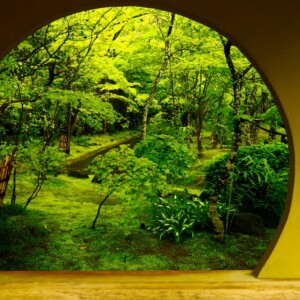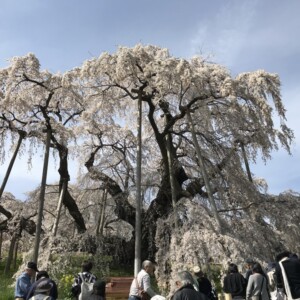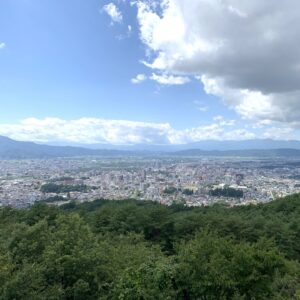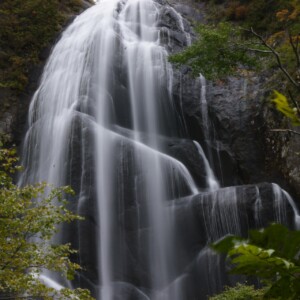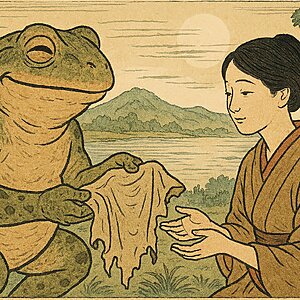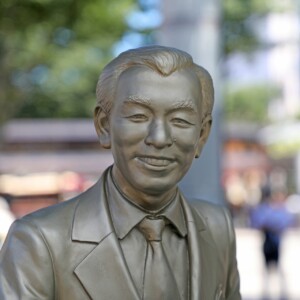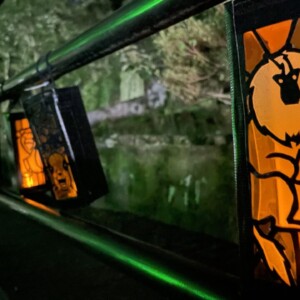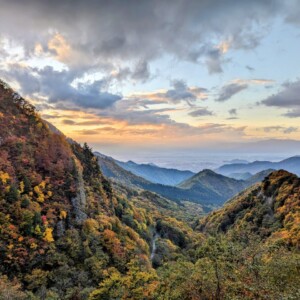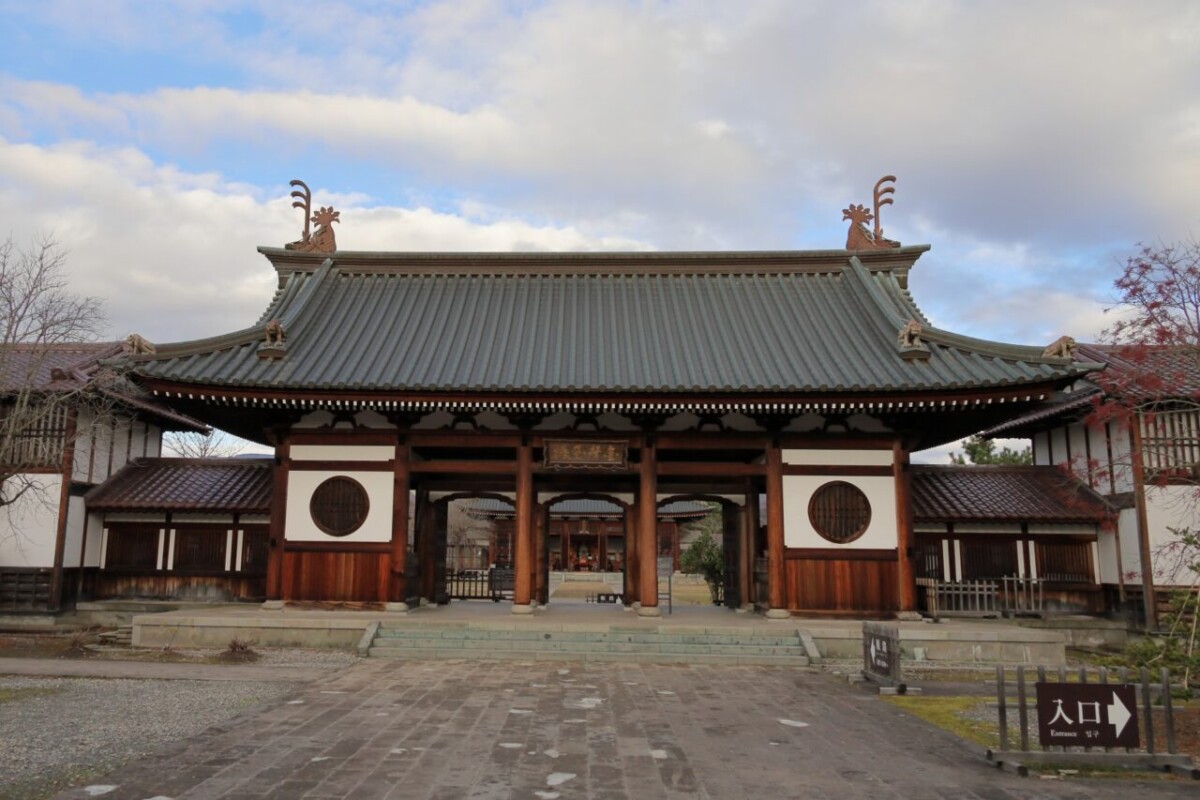
The Nisshinkan, which the Hakutotai learned about, is one of Japan's leading feudal schools! There's nothing that's not possible [Fukushima Prefecture]
table of contents
The Aizu Domain School, Nisshinkan, was built and opened in 1803 adjacent to Aizu-Wakamatsu Castle
The Nihon Shinkan was one of the largest domain schools in Japan, and supported the educational standard of Aizu, which was said to be one of the best in Japan. Guidelines for developing human resources, such as "What should not be done should not be done," were taught here
It was destroyed during the Boshin War and completely restored in Kawahigashi-cho, on the outskirts of Aizuwakamatsu City, in 1987. Even today, you can see faithfully recreated scenes of children studying within the vast grounds
Not only can you see valuable facilities such as Japan's first swimming pool, but you can also get a firsthand feel for what the education of samurai was like at the time
The success of the Aizu clan was only possible because of Nisshinkan
Although the Aizu samurai were a defeated army, they made many achievements, especially in the field of education
Yae Niijima (Yamamoto), who is famous for appearing in the NHK historical drama "Yae no Sakura," also made a great contribution by working hard to open the current Doshisha Women's College of Liberal Arts
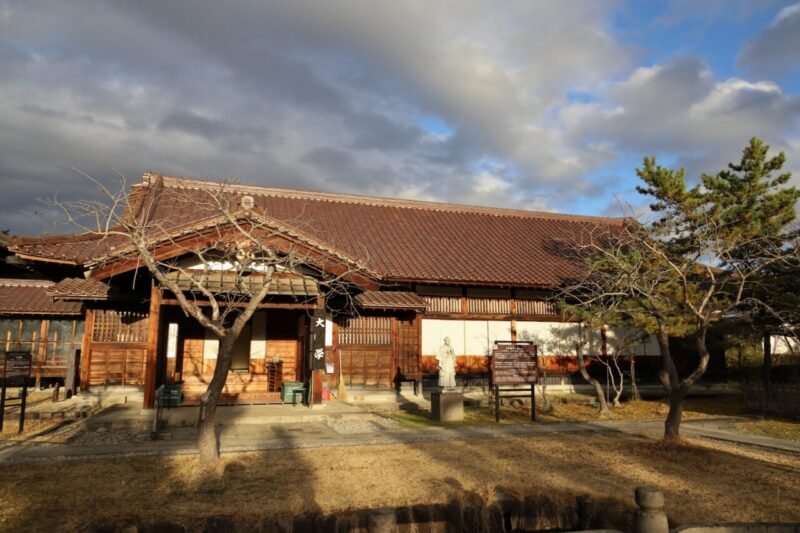
It is believed that the high quality of Aizu education is what has enabled the school to produce so many results that are still felt today
During the Edo period, each domain had its own domain school where students were educated to become fine samurai
The Aizu domain school, Nisshinkan, was open to not only samurai but also children from farming and merchant families, and it was customary for children of the Aizu domain to enter Nisshinkan when they turned 10 years old
The place where the future Byakkotai learned
The Byakkotai, a group famous nationwide for its tragic story, also studied here
In addition to academic subjects such as Confucianism and etiquette, martial arts such as archery, swordsmanship, spears, and horsemanship were also compulsory subjects. Elective subjects were also offered, and children were said to have chosen them depending on their family's occupation
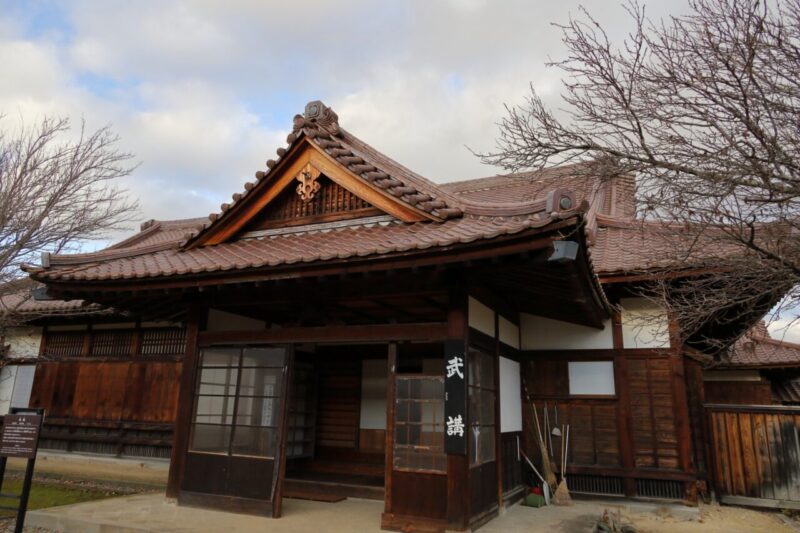
He achieved particularly excellent results in his Confucian reading, which eventually opened the door for him to study in Edo
The restored Nisshinkan
Upon entering the south gate of the Nisshinkan, you will find a projection room on your right. Upon entering, you will first watch a video here and learn about what kind of place the Nisshinkan is

Audio guides are also available for listening on smartphones and tablets
As you walk along the route, you will come to a large gate called "Gekimon." At the time, a drum was placed in the left chamber of this gate, and the sound of the drum was used instead of what we now call chimes
Taiseiden, the university, and the reference room are located on a site half the size of the Tokyo Dome
Once you pass through the gate, you will come across a large garden in the center of Nisshinkan, and directly in front of you is a particularly large building called the Taiseiden. To the right of that is the university, and to the left is the museum. The route leads to the interior of Tojuku, located on the right, just before the university. This is a facility that was once a reading room where children studied
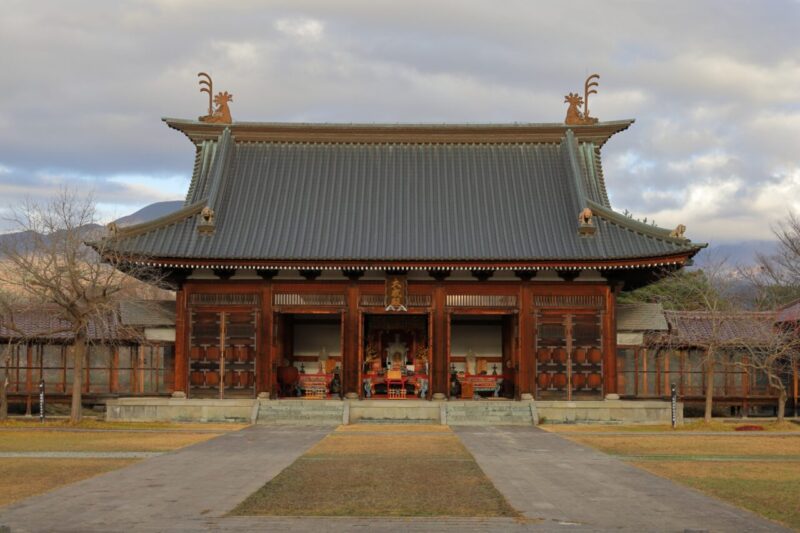
There are dolls of children from that time on display, and scenes of them studying or arm-wrestling during breaks are recreated. You can tour the university, Taiseiden Hall, and museum
Taiseiden is the symbolic building of the Nisshinkan, with a statue of Confucius, said to be the founder of Confucianism, in the center and statues of his disciples on either side
At the museum, you can see a variety of materials, including documents related to the Aizu Matsudaira family, various documents from that time, and the achievements of Nisshinkan graduates
There is a corner where you can try painting and other activities
As time passes inside, you will feel as if you have traveled back in time to the Edo period. In this atmosphere, you can try out Kyudo (300 yen per session, 5 arrows), painting (Akabeko: 870 yen, Okiagari Koboshi: 730 yen), tea ceremony (540 yen), and zazen (500 yen)
Videos of each experience are available on the Nisshinkan website
Nisshinkan: http://www.nisshinkan.jp/experiencing#zazen
A painting contest is being held. If you win a prize, your photo will be published on Nisshinkan's official website and in the Fukushima Minyu Shimbun newspaper, which is a sponsor of the contest. The grand prize winner of the contest held during Golden Week in 2018 has been posted on the website
Nisshinkan: http://www.nisshinkan.jp/news/10025.html
Japan's first swimming pool
Another highlight is the Suiren Suimaike Pond (now known as a school pool, with a circumference of 153m). It is known as the first swimming pool in Japan
As the name suggests, swimming training was not as simple as swimming in a pool during school physical education classes today. Apparently, back then, people practiced swimming while wearing armor. Swimming while wearing Western clothes is already quite tiring, so swimming while wearing armor must have been unimaginably difficult
He learned a unique swimming style called Mukai-ryu, and sometimes rode horses across the pond. He also apparently swam while eating and while writing calligraphy
The music video for Nogizaka46's "Nigemizu" is set in Nisshinkan. You can get a good feel for the atmosphere and what's going on inside, so I recommend watching it here:
There are also plenty of other attractions, such as an observatory and an archery range
Nisshinkan is a meritocracy school
Promotion was based on merit. Family background and age did not matter. Because both academics and martial arts were valued, those who excelled in both academics and martial arts and made daily efforts were promoted
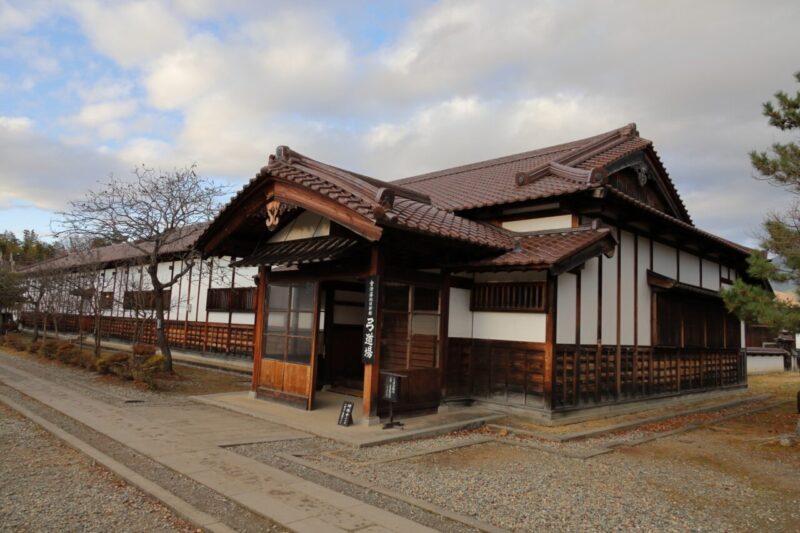
Because it was such a meritocratic school, it was common for younger brothers to surpass older brothers. For children of prestigious families, grades at Nisshinkan were given great importance, and if they were unable to graduate, they were not allowed to inherit the family business
It is said that those who achieved first place at the Sodokusho at the age of 15 had the academic ability to graduate from what is now known as a national university
Because of this strict system, Nisshinkan was particularly famous among the 250 domain schools across the country at the time, and it is said that it had the highest rate of students going on to what would now be called the University of Tokyo
What is life like at Nisshinkan?
What kind of life did the children of the samurai actually lead when they attended Nisshinkan? They would go to school in groups in the morning, similar to the school groups we have today
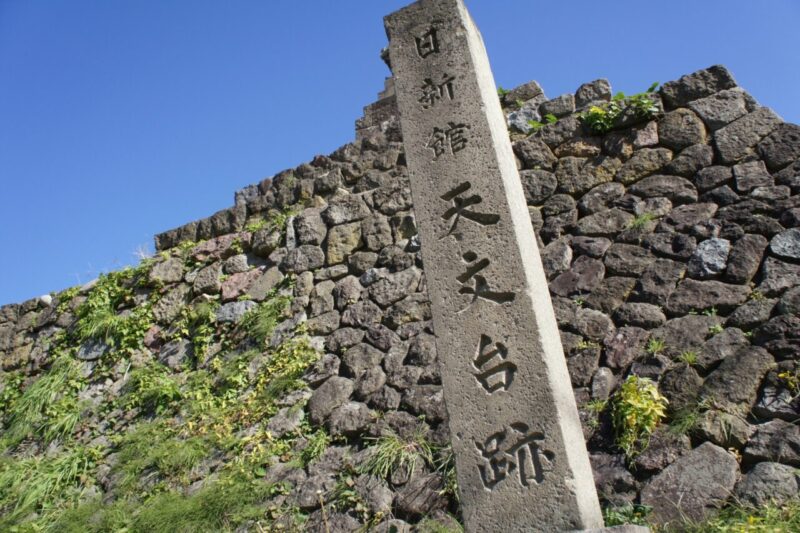
School hours were from sunrise to sunset, with longer hours in the summer and shorter hours in the winter. The school had a total of about 1,000 students
Students focused on Confucianism and first entered the Sodokusho, which had levels from 4th grade to 1st grade
The grade that had to be obtained differed depending on the house
As mentioned above, it was a meritocracy school, so age didn't matter when it came to getting a grade. Completing Grade 1 at age 18 was considered neither good nor bad
Some students even achieved Grade 1 at the age of 14, which is an extremely high level of excellence. Great figures of the Meiji period, such as Takamine Hideo and Minami Tsunanori, were so highly regarded at the Sodokusho that they were called "children of God."
The grades that had to be completed varied depending on the family; the eldest son of a family with a stipend of less than 500 koku was required to pass second grade, while the eldest son of a family with a stipend of 500 koku or more was required to pass first grade
If you were unable to complete the required grades, you had to continue studying, and were even allowed to study up to the age of 35
Fighting even during class is not allowed! Losing is not allowed
Apparently classes were very noisy. When school scenes are shown on TV dramas, the image is of everyone quietly and diligently studying
However, in reality, this was not the case, and it seems that sometimes big fights would break out during class. Nowadays, teachers and other people around would stop them, but this was still the world of samurai. In the past, parents and teachers had a fighting spirit and were free to do as much as they wanted
If I lost the fight and went home, my parents would get angry at me, so I was very serious about the fights
Summary of Nisshinkan
Nisshinkan was a domain school attended by many great people from Aizu. Yae's older brother, Kakuma Yamamoto, who appeared in the NHK historical drama "Yae no Sakura," and her first husband, Naonosuke Kawasaki, were professors at Nisshinkan
Teijiro Ito, who lived next door to Yae and would later join the Byakkotai, studied at Nisshinkan
Yae loved Teijiro like a younger brother and once said, "Teijiro always closed his eyes when he fired his gun, so I scolded him and called him a coward."
At Nisshinkan, you can vividly imagine the Byakkotai members going to school with gusto. They probably never imagined that they would later commit mass suicide on Mt. Iimoriyama
As you walk around the Nisshinkan, imagining the lively figures of children of the past, various emotions, such as melancholy and sadness, come over you, and you are drawn into the solemn waves of time
Nisshinkan<Information>
- Name: Aizu Domain School Nisshinkan
- Address: 10 Takatsukayama, Minamitakano, Kawahigashi-cho, Aizuwakamatsu City, Fukushima Prefecture
- Phone number: 0242-75-2525
- Official URL: http://www.nisshinkan.jp/



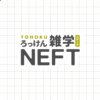
![[Aizuwakamatsu City, Fukushima Prefecture] The biggest festival in Aizu! Aizu Festival 2023 holding information 634-1569](https://jp.neft.asia/wp-content/uploads/2023/08/634-1569-1-150x150.jpg)
![[Recommended Autumn Festival: Fukushima Edition] Autumn in Fukushima is a warrior line and fight festival! Fukushima Catch](https://jp.neft.asia/wp-content/uploads/2024/08/cb34bf6367937424774a9fc363549068-150x150.jpg)
![[Fukushima Prefecture during the Boshin War] What were the decisions of Aizu, Shirakawa, Tanagura, Nihonmatsu...and other domains? Statue of the White Tigers of Mt. Imori](https://jp.neft.asia/wp-content/uploads/2022/06/3579410_m-150x150.jpg)
![A report on the experience of "Whiskey Collection Koriyama," Tohoku's first whiskey event! [Fukushima Prefecture] Whiskey Collection Koriyama](https://jp.neft.asia/wp-content/uploads/2024/10/IMG_0751-EDIT-150x150.jpg)
![The delicacy "Anko" is a delicious winter taste on the beach! [Fukushima Prefecture] Monkfish](https://jp.neft.asia/wp-content/uploads/2022/02/2054097_m-150x150.jpg)
![A tour of the 33 remaining Kannon in Minami Aizu. "Thirty-three Kannon" certified as a Japanese Heritage Site [Fukushima Prefecture] 11_MG_9631](https://jp.neft.asia/wp-content/uploads/2022/11/11_MG_9631-150x150.jpg)
!["Negaseki" is one of the three ancient Oshu sekies that surpasses Minamoto Yoshitsune and Matsuo Basho [Tsuruoka City, Yamagata Prefecture] 3809167_m](https://jp.neft.asia/wp-content/uploads/2023/02/3809167_m-150x150.jpg)
![What is "disc dumplings" in Fukushima City? Introducing recommended shops and history [Fukushima Prefecture] Disc Dumplings 1](https://jp.neft.asia/wp-content/uploads/2023/03/31485117_m-150x150.jpg)
